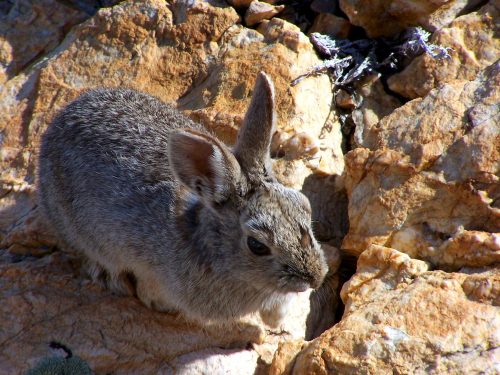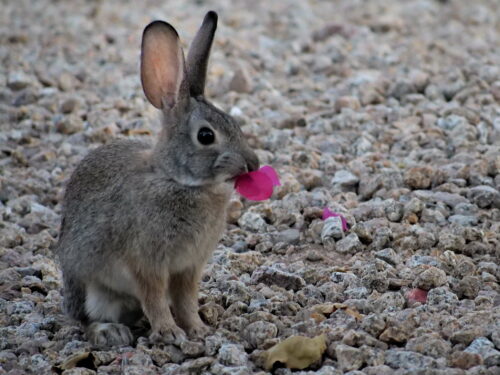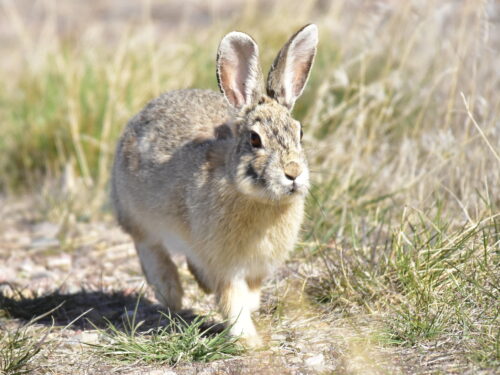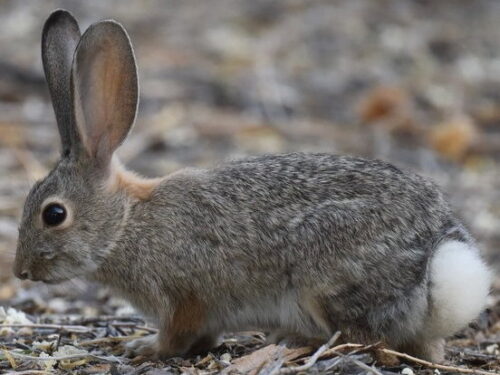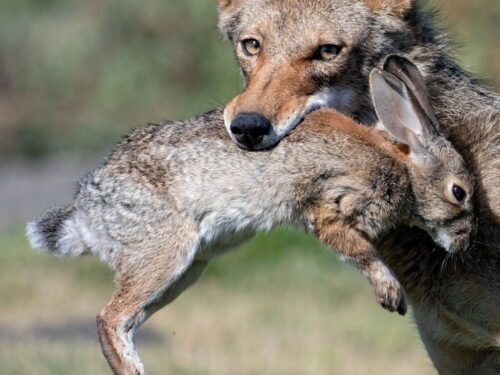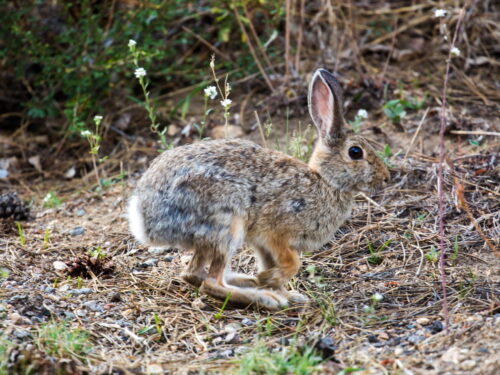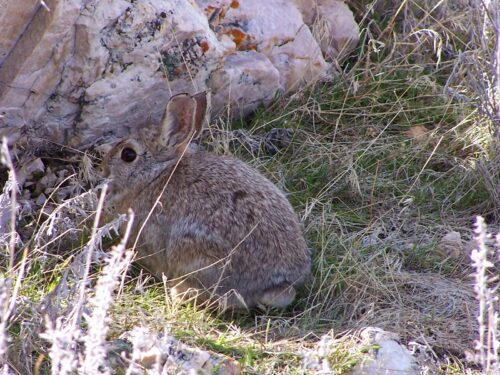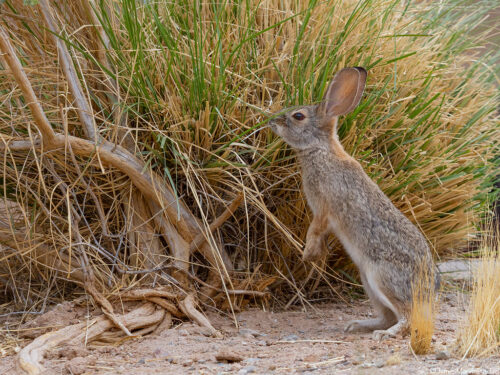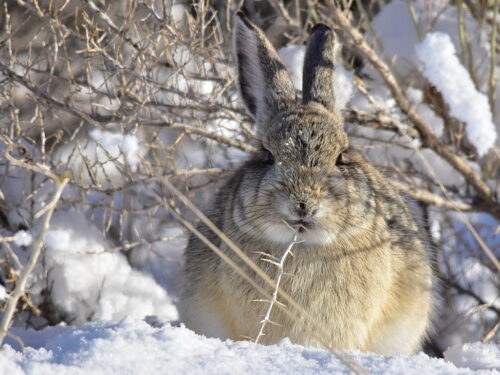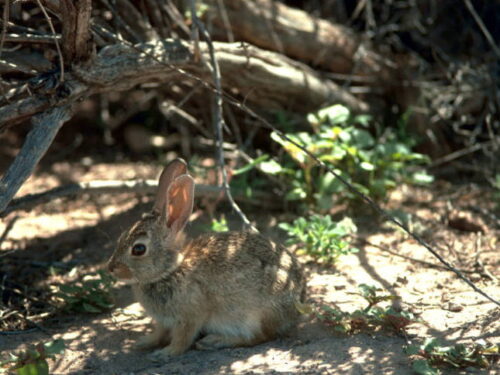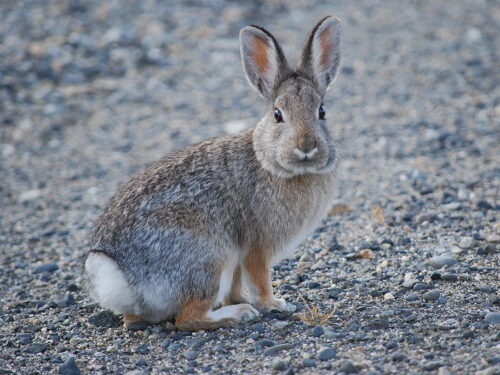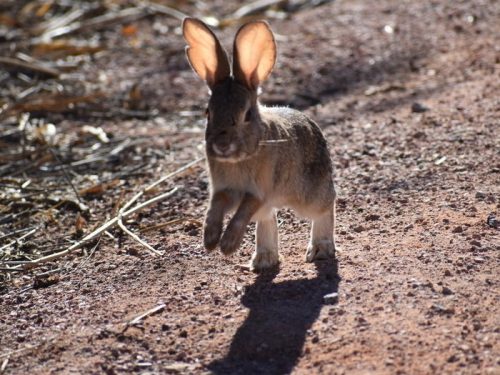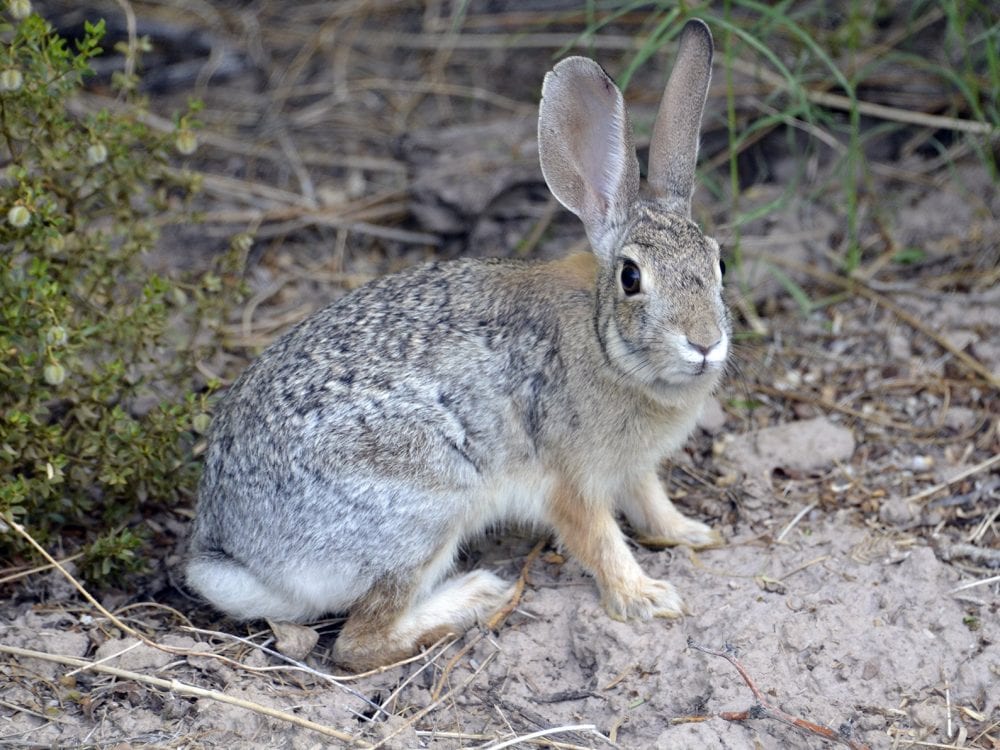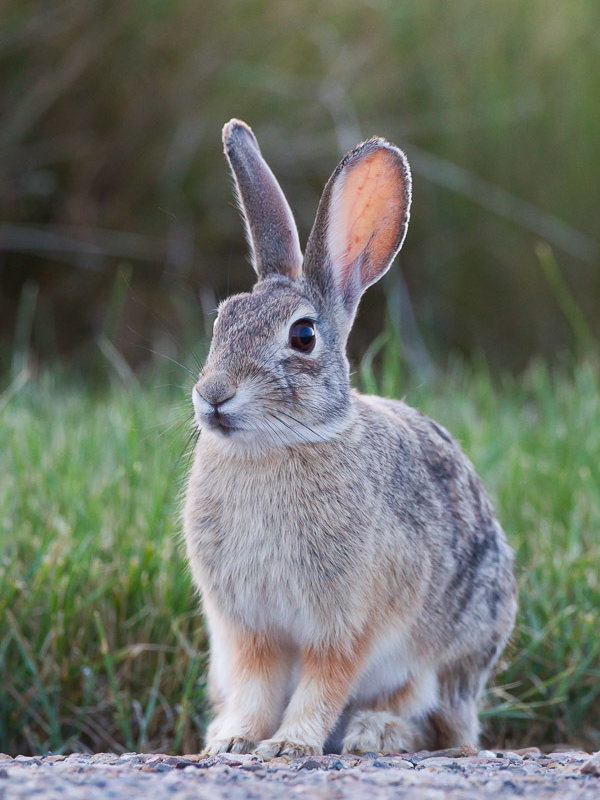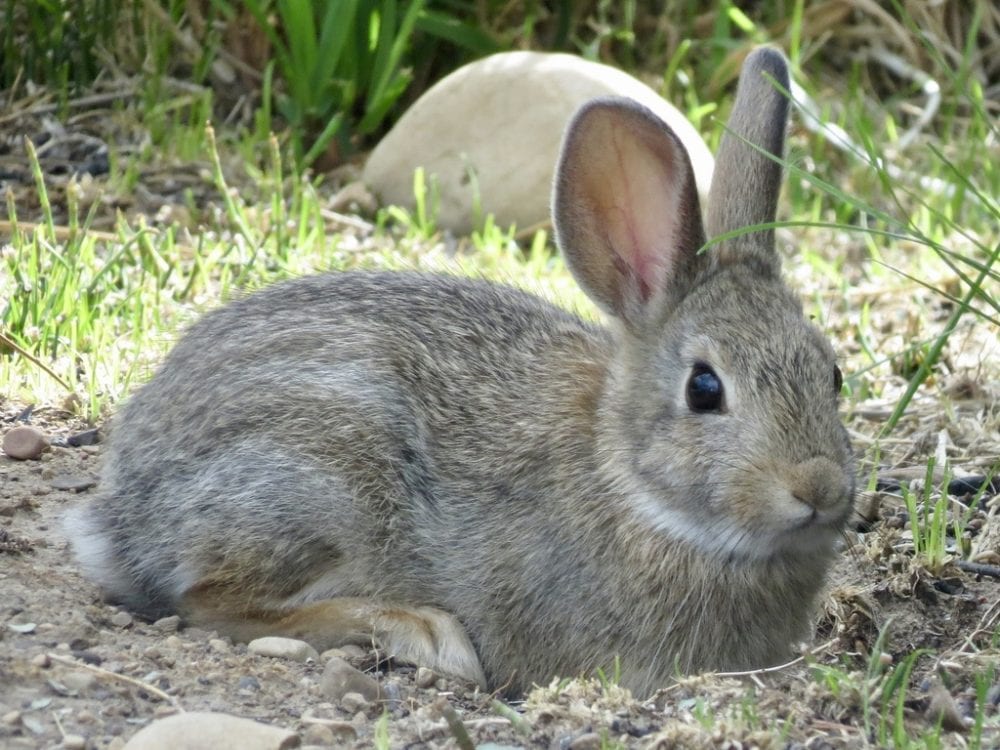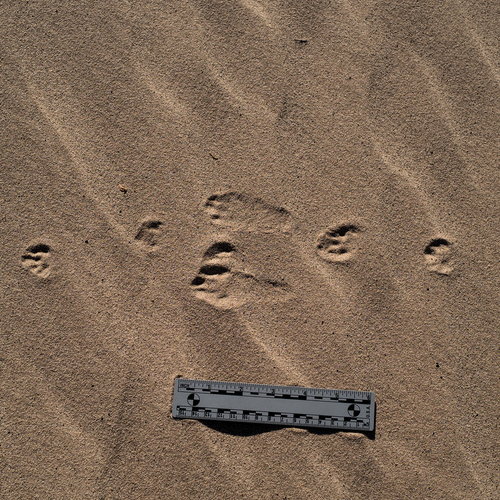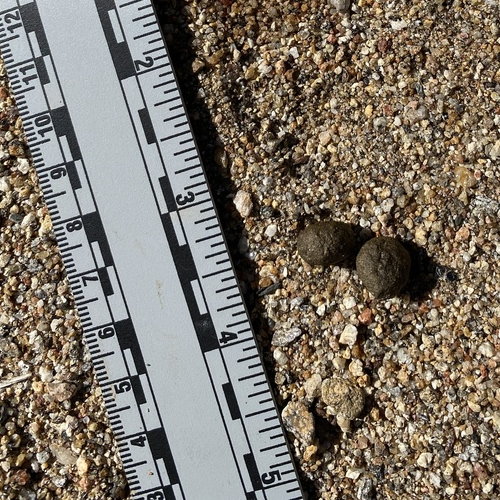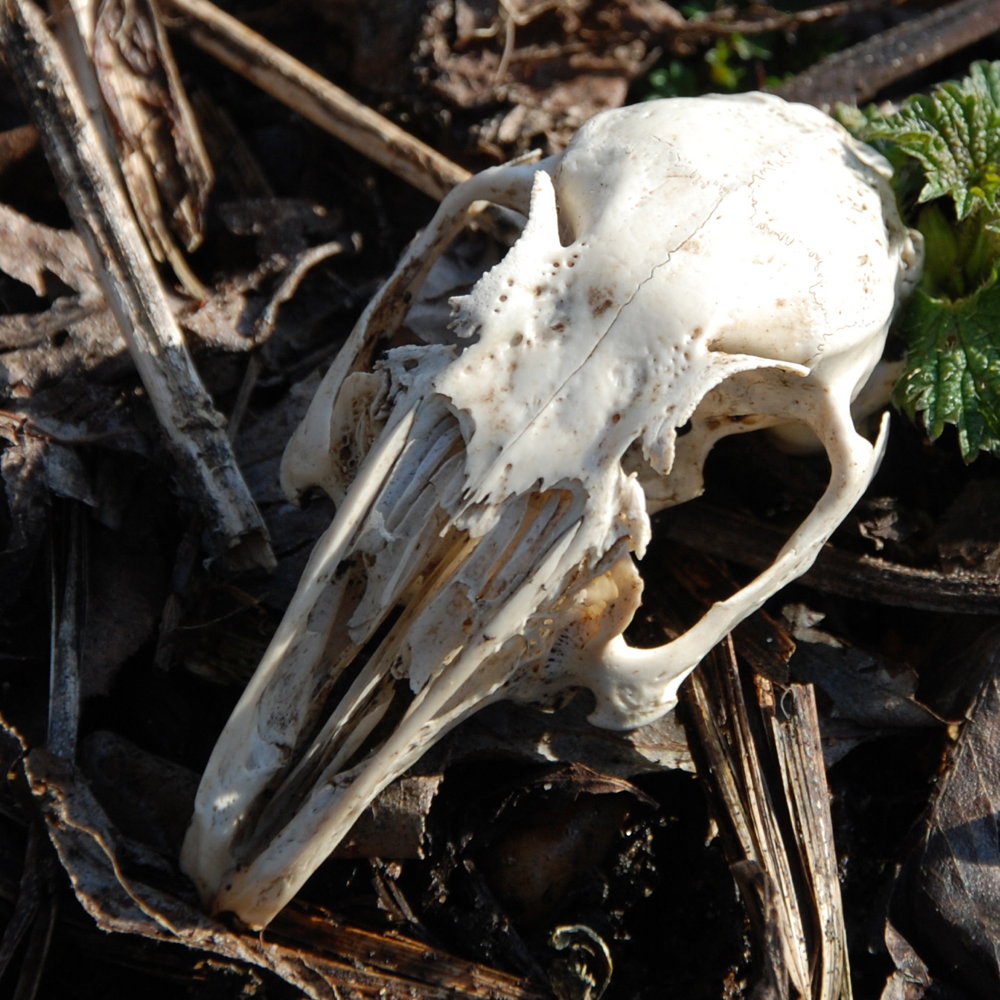Cottontails (Desert and Mountain)
Scientific Name:
Sylvilagus audubonii (desert)
Sylvilagus nuttallii (mountain)
Type: Mammal
Family: Leporidae (Hares and Rabbits)
Size:
13 – 15 inches in length
Weight: 1.5 to 3 pounds
Life Span: 1 – 3 years
Physical Description
Both the desert and the mountain cottontail look like typical rabbits — small, furry animals with long ears, short fluffy tails, strong, large hind legs, and large front teeth. Both are gray to brown with some reddish-brown fur on the legs and nape of the neck. In addition, they are fairly similar in size.
However, the distinguishing feature of the desert cottontail is its large, long ears that they tend to carry erect. In contrast, the mountain cottontail’s ears are smaller and more rounded.
Range and Habitat
Both cottontails are found in the western portion of the US with the range of the mountain cottontail slightly larger than the desert as it extends further north.
The desert cottontail prefers arid regions including woodlands and grasslands where they hide in heavy brush, brambles, or holes. In general, it is found at elevations from sea level to about 6,000 feet.
The mountain cottontail prefers brushy areas on mountain slopes that are covered with grasses and sagebrush. However, they do inhabit rocky mountainsides where vegetation is sparse but there are crevices that they can hide in. Mountain cottontails can be found at 4,500 to 10,500 feet above sea level.
Desert
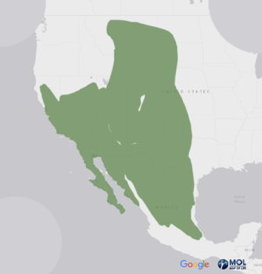
Mountain
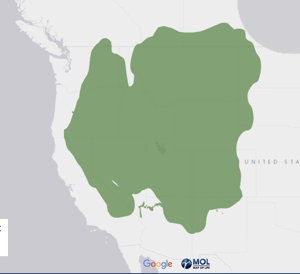
Diet
Ninety percent of a cottontail’s diet consists of grass. However, they will also eat some fruits, nuts, and vegetables depending on the season.
Cottontails are coprophagic, that is they consume their food twice. They produce two types of fecal pellets. The dry ones are the ones you most typically see on the ground. The moist ones are eaten by the cottontails in order to extract the nutrients as effectively as possible.
Behavior and Social Life
Desert cottontails are not found in groups and are active throughout the year. They are most active in the early morning and evening looking for food. If startled they will either freeze or run for cover using a zig-zag pattern. Most of the time they spend hiding under cover for protection and to minimize water loss during the hotter seasons. To cope with heat loss, they are able to change their metabolic rate depending on the ambient temperature. They will also pant and lose heat through their large ear that make up 14% of their body size.
Like the desert cottontail, the mountain cotton is usually solitary, is active throughout the year, and looks for food during the early morning and evening. However, it prefers to feed near water and the cover of brush. If spooked it will run towards cover and freeze, if further pursued it will hop away in a semi-circular path to try to fool the predator.
Desert
Mountain
Life Cycle
Desert cottontails mate from December until late summer. The female creates a nest by digging a hole in the ground that is about 8 inches deep and then lining it with grass and fur. The babies are born about a month later. However, if the environmental conditions become unfavorable, the pregnant females can resorb some of the embryos. There are typically three babies in a litter with about five litters per year. The babies are fed once per day and are ready to leave the nest in around two weeks of age. They will remain near the nest for another three weeks and reach sexual maturity at three months of age.
Mountain cottontails mate at night between March and July. The female makes a cup-like cavity lined with fur and dried grass as a nest and then covers the top with more fur, grass, and small sticks. Typically between four and eight babies are born a month after mating. There are usually four to five litters per year. The babies are weaned after a month and reach sexual maturity at around three months.
Desert and Babies
Mountain Babies
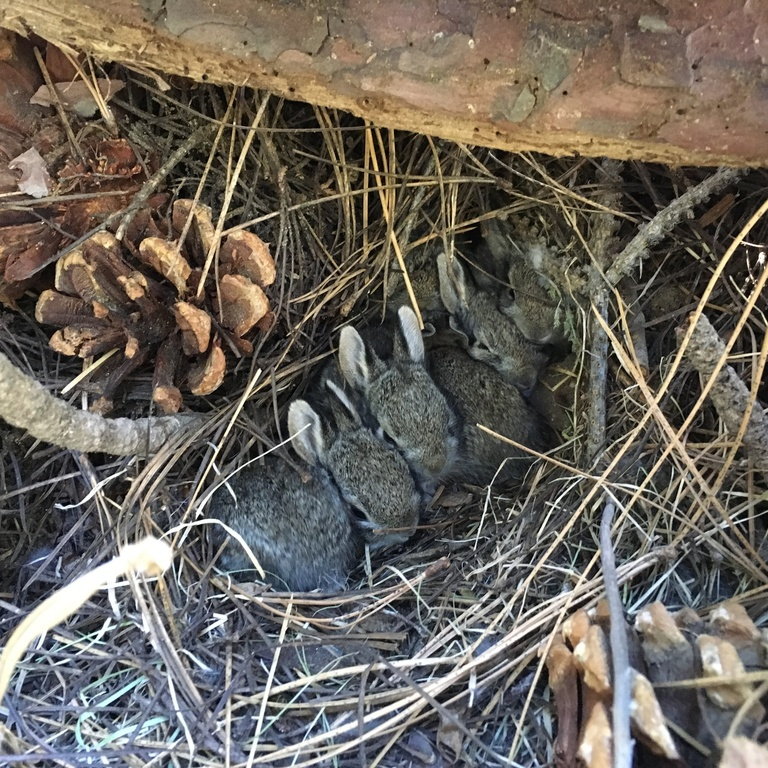
Desert Young One
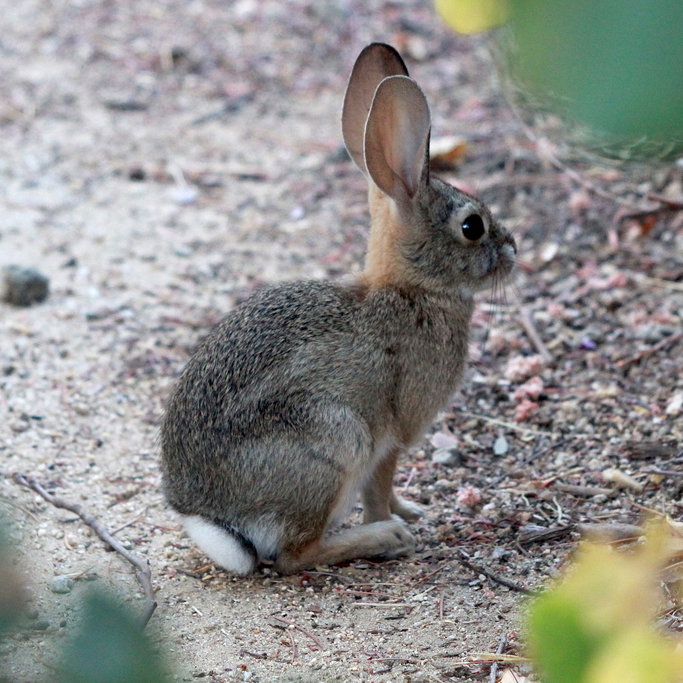
Title
Ecological Role
Cottontails can graze on grasses until they are depleted in an area, causing habitat change. They are also a primary prey animal for a large number of animals including birds of prey, mustelids, coyotes, bobcats, and snakes which keeps their population in check.
Interactions With Humans
Cottontails are hunted for food and fur in many areas.
Interesting Facts
- Cottontail rabbits can run up to 18 miles per hour for up to a half mile.
- Cottontails have up to 100 million scent receptors in their noses.
- Rabbits twitch their noses to help expose their scent receptors.
- The teeth of cottontail rabbits never stop growing
- Eating tough grasses wears down a cottontail’s teeth.
- These rabbits can make noises by purring and grinding their teeth but usually remain silent to avoid predators.
- A female rabbit is fertile again 24 hours after giving birth.
- Rabbits have the potential to live for eight to ten years but are lucky to live for one.
- Female rabbits are bigger than males.

